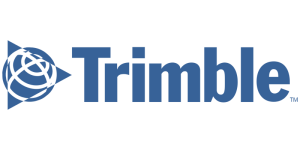How could SEO strategies adjust to RankBrain’s machine learning abilities to determine user intent in 2024?
As the digital landscape continues to evolve at a breakneck pace, the introduction of RankBrain, Google’s machine learning algorithm, has sent ripples through the SEO community. In 2024, this AI-driven technology has matured, firmly embedding itself in the core of search engine processes. RankBrain’s primary objective is to interpret search queries and user intent with an unprecedented level of sophistication, presenting a new frontier for SEO strategies. This cutting-edge system not only understands the literal text of searches but also grasps the nuanced, often unspoken intentions behind them.
Now, more than ever, SEO experts are tasked with navigating the intricate web of signals interpreted by RankBrain. Traditional keyword optimization is no longer sufficient. To thrive in 2024’s SEO landscape, strategies must adapt to embrace the subtleties of semantic search and the predictive nature of machine learning. Content creators and marketers must delve deeper into the psychology of their target audience, crafting content that aligns with the intent behind searches, not just the keywords themselves.
In this article, we will explore the strategic shifts necessary to align with RankBrain’s advanced capabilities. We will discuss the importance of context, the power of user engagement signals, and the growing need for a holistic approach to content creation. With RankBrain’s machine learning abilities continuously shaping the SERPs (Search Engine Results Pages), understanding and adapting to its interpretation of user intent is crucial for any business looking to secure its online presence and visibility in 2024.
Instant SEO Checker + Score & Report
Enter the URL of any landing page to see how optimized it is for one keyword or phrase...
Understanding RankBrain and User Intent
Understanding RankBrain and user intent is paramount when adjusting SEO strategies to align with the evolving capabilities of machine learning in determining user intent. As we look towards 2024, it’s essential to delve into what RankBrain is and how it interprets the searches made by users.
RankBrain is part of Google’s core algorithm which uses machine learning to decipher the queries that users input into the search engine. It is adept at handling new, complex, or ambiguous queries, and it can make sense of phrases or questions that it hasn’t encountered before. RankBrain does this by associating past searches with similar themes and learning which results are most relevant to these types of queries.
For SEO professionals, this means that understanding user intent becomes a critical element of strategy. There are typically four types of search intents: informational, navigational, transactional, and commercial investigation. Each of these intents requires a different approach to how content is structured and targeted. SEO efforts must move beyond mere keyword stuffing and focus on providing comprehensive content that addresses the underlying intent of a search query.
To adapt to RankBrain, content creators should focus on thematic relevance and context rather than relying solely on keywords. This involves developing content that answers questions, solves problems, and provides value that aligns with the user’s search intent. Moreover, using natural language and question-based phrases in content can improve its chances of being recognized by RankBrain as a suitable match for complex queries.
Another aspect of adapting to RankBrain involves analysing the search results for specific queries to understand what Google deems as relevant content. By studying the top-ranking pages, SEO strategists can gain insights into the type of content that satisfies user intent for particular keywords or topics. This can guide the creation of new content or the optimization of existing content to better align with RankBrain’s interpretation of relevancy.
Furthermore, it’s important to note that RankBrain is just one part of the algorithm, and while it’s significant, SEO strategies must also take into account other factors such as backlinks, freshness, and mobile-friendliness, which can all influence rankings. However, the emphasis on user intent is likely to grow even stronger as machine learning algorithms like RankBrain become more sophisticated at interpreting and predicting the needs of search engine users. Therefore, SEO professionals must continue to hone their understanding of user intent and craft their strategies accordingly to ensure visibility in the search results of the future.
Google Ads Success Example
The Challenge: The Challenge: Increase new dental patients with better Google Ads campaigns.
Keyword Research Evolution for Semantic Search
As the landscape of search engine optimization (SEO) continues to evolve, especially with the advent of RankBrain’s machine learning capabilities, keyword research has undergone a significant transformation. Gone are the days when SEO professionals could simply target a list of high-volume keywords and expect their content to rank well. In 2024, the evolution of keyword research for semantic search is more crucial than ever in adjusting to RankBrain’s nuanced understanding of user intent.
To align with RankBrain’s proficiency in interpreting user queries, SEO strategists must now focus on the intent behind the keywords rather than the keywords themselves. This means that keyword research practices are shifting towards identifying topics and concepts that are contextually relevant to the target audience. Instead of zeroing in on exact match keywords, SEO experts are creating content that answers the questions users are likely to ask and addresses their underlying problems and needs.
Semantic search reflects the search engines’ move towards understanding natural language and the way people actually speak. Therefore, keyword strategies have to include long-tail keywords and conversational phrases that are aligned with voice search and mobile queries. As users increasingly interact with search engines through voice assistants and mobile devices, optimizing for the natural, spoken language becomes imperative. SEO professionals are now tasked with understanding the nuances of conversational queries and how they differ from traditional text-based searches.
The incorporation of related keywords, synonyms, and variants that support the main content theme is another strategic approach to align with RankBrain’s semantic capabilities. By creating a network of semantically related terms, SEO content can signal to RankBrain the breadth and depth of the content’s relevancy to a particular topic. This approach not only helps in capturing a wider array of search queries but also in establishing the content’s authority and expertise in the subject matter.
Furthermore, the use of structured data and schema markup has become more important in helping search engines understand the context of the content. By providing explicit clues about the meaning of a page, SEO experts can assist RankBrain in accurately matching content with user intent, even for complex or ambiguous queries.
In conclusion, as RankBrain continues to refine its ability to decipher user intent, keyword research must adapt to a more intent-based and semantically rich approach. Understanding the subtleties of language and the context in which search queries are made is fundamental to crafting an SEO strategy that resonates with both users and search engines in 2024.
Content Relevance and Quality
Content relevance and quality have always been crucial components of SEO, but with RankBrain’s machine learning capabilities, their importance is greatly amplified. As search engines evolve to understand user intent more deeply, simply peppering a webpage with keywords is no longer sufficient. Instead, content must be intricately aligned with the queries it aims to rank for, both in terms of the topics covered and the questions answered.
To adapt to RankBrain, content creators must focus on creating comprehensive content that provides valuable information and satisfies the user’s search intent. This means that articles, blog posts, and web pages need to be thoughtfully crafted to address the needs and pain points of the target audience. The use of natural language, relevant terms, and context becomes increasingly important, as RankBrain can discern the quality of content based on how well it resonates with users and fulfills their search needs.
Moreover, the structure of the content plays a significant role in its effectiveness. With RankBrain, it’s essential to organize content in a logical and intuitive manner. Headings, subheadings, bullet points, and numbered lists can help break down information and make it more digestible for the reader. Utilizing such formatting aids not only improves the user experience but also allows search engine algorithms to better understand the hierarchy and emphasis of the content.
Another aspect to consider is the depth of the content. RankBrain favors content that covers a topic thoroughly, offering insights, examples, and data that enrich the user’s understanding. This means that superficial content that skims the surface of a subject is less likely to perform well in search rankings. Instead, detailed and well-researched pieces that delve into the nuances of a topic are more likely to be rewarded.
In essence, adjusting SEO strategies to cater to RankBrain involves a shift towards creating content that is not only relevant and of high quality but also deeply aligned with the user’s search intent. As machine learning continues to refine the way search engines interpret content, the emphasis on relevance and quality will only grow stronger, making it imperative for SEO practitioners to invest significant effort into the content creation process.
SEO Success Story
The Challenge: The Challenge: Design an SEO friendly website for a new pediatric dentist office. Increase new patient acquisitions via organic traffic and paid search traffic. Build customer & brand validation acquiring & marketing 5 star reviews.
User Experience and Behavioral Signals
User experience (UX) and behavioral signals have gained significant importance in SEO strategies, particularly with the advent of RankBrain and the increasing sophistication of machine learning in understanding user intent. As we look towards 2024, these factors will likely play an even more crucial role in determining search engine rankings.
RankBrain is designed to interpret search queries and deliver results that not only match the keywords but also align with the perceived intent behind the query. This means that websites that provide a superior user experience—making it easy and enjoyable for visitors to navigate and find the information they are looking for—are more likely to be favored by RankBrain.
Behavioral signals, such as click-through rates (CTR), time spent on the site, bounce rates, and the rate at which users return to the search engine after visiting a site, can all provide insights into the quality of the user experience. A high CTR suggests that the title and description of a page are compelling and relevant to the search query. Meanwhile, longer dwell times and lower bounce rates indicate that users are engaging with the content and finding it useful, which can signal to RankBrain that the page is a good match for the query.
Improving user experience requires a multifaceted approach. Websites need to be intuitive, with a clear structure and easy-to-use navigation. Content should be accessible and visually appealing, with text broken up by headers, bullet points, and images to make it easy to scan. Page load times should be as quick as possible, as slow-loading pages can increase bounce rates and negatively impact the user’s experience.
Mobile responsiveness is another critical aspect of UX, as a growing number of users access the internet via mobile devices. Websites that offer a seamless experience across all device types are more likely to retain visitors and perform better in search engine rankings.
As RankBrain continues to evolve and become more adept at interpreting user intent, SEO strategies will need to prioritize the user experience and closely monitor behavioral signals. By focusing on creating an engaging, user-friendly environment, websites can align themselves with RankBrain’s objectives and improve their chances of achieving higher rankings in the search results.
Jemsu has been a great asset for us. The results have grown at strong positive linear rate. They have been extremely accessible, flexible, and very open about everything. Natalya is a star example of how to work with your accounts to drive them forward and adjusts to their quirks. Jaime is able to clearly communicate all of the work that is being done behind the scenes and make sure that all of my team is understanding.
I couldn’t be more pleased with my JEMSU Marketing Team!
Julia, Tamara, Joelle and Dally have exceeded my expectations in professionalism, creativity, organization, and turn around time with my Social Media Management project.
I have thoroughly enjoyed sharing my journey with this team of empowered women!
Thank you JEMSU! Your team designed and launched my new website, and developed strategies to drive traffic to my site, which has increased my sales. I highly recommend your Website & SEO Agency!
Jemsu has always been professional and wonderful to work with on both the SEO and website design side. They are responsive and take the time to explain to us the complicated world of SEO.
Jemsu is an excellent company to work with. Our new website blows away our competition! Unique, smooth, and flawless. Definite wow factor!
The folks at JEMSU were excellent in designing and launching our new website. The process was well laid out and executed. I could not be happier with the end product and would highly recommend them to anyone.
Jemsu is a great company to work with. Two prong approach with a new site and SEO. They totally redesigned my website to be more market specific, responsive, and mobile friendly. SEO strategy is broad based and starting to kick in. My marketing will also be adding Facebook and Google ads in the coming weeks. Thanks for your all you hard work.
JEMSU has wworked with our team to create a successful campaign including incorporating an overall rebranding of our multiple solutions. The JEMSU team is embracing of our vision and responds timely with life of our ideas.
JEMSU is great company to work with. They listen & really work hard to produce results. Johnathan & Sasha were such a big help. If you have a question or concern they are always there for you.
I would definitely recommend them to anyone looking to grow their company through adwords campaigns.
Jemsu have exceeded our expectations across all of our digital marketing requirements, and I would recommend their services to anyone who needs expertise in the digital marketing space.
JEMSU was able to quickly migrate my site to a new host and fix all my indexation issue. I look forward to growing my services with JEMSU as I gain traffic. It’s a real pleasure working with Julian and Juan, they’re both very professional, courteous and helpful.
JEMSU is incredible. The entire team Is professional, they don’t miss a deadlines and produce stellar work. I highly recommend Chris, Rianne, and their entire team.
We’ve been working with JEMSU for about five months and couldn’t be happier with the outcome. Our traffic is up and our leads are increasing in quality and quantity by the month. My only regret is not finding them sooner! They’re worth every penny!
Technical SEO and Site Performance
Technical SEO and site performance are crucial components for adapting SEO strategies to RankBrain and its machine learning capabilities. As Google’s algorithms become more sophisticated in understanding user intent, the technical health and performance of a website can significantly influence its visibility in search results.
Firstly, the speed of a website is a critical factor. With RankBrain, Google can evaluate user satisfaction by observing how quickly users get the information they need. A fast-loading site can improve user experience, reduce bounce rates, and increase the likelihood of engagement, all of which are positive signals to RankBrain. SEO professionals must prioritize page speed optimization, employing techniques such as image compression, caching, and minimizing CSS and JavaScript.
Secondly, mobile optimization is no longer optional. With mobile-first indexing, Google predominantly uses the mobile version of a site’s content for ranking and indexing. A website that is not optimized for mobile devices may lose out on a significant amount of traffic. Responsive design, readable font sizes, and accessible navigation are all aspects that need to be refined to cater to mobile users.
Structured data also plays a vital role in helping RankBrain understand the context of website content. By implementing schema markup, webmasters can provide explicit clues about the meaning of a page’s content, which can help RankBrain present the most relevant results to users. This can lead to enhanced visibility in search results, including the possibility of appearing in rich snippets and other special search features.
Lastly, website security is an area that cannot be overlooked. Secure sites with HTTPS encryption are favored by Google, as they protect the privacy and security of users. With cybersecurity threats on the rise, ensuring that a website is secure is not only good for users but also for maintaining trust with search engines.
In conclusion, technical SEO and site performance are foundational elements that work in tandem with the content and user experience aspects of SEO. By ensuring that a website is technically sound and performs well, SEO strategists can create an environment that is favorable for RankBrain’s machine learning algorithms, thus positioning their site for better rankings in an ever-evolving search landscape.
SEO Success Story
The Challenge: Increase dent repair and body damage bookings via better organic visibility and traffic.
Continuous Learning and Adaptation Strategies
As search engines evolve, particularly with the integration of RankBrain’s machine learning capabilities, SEO strategies must also adapt. Continuous learning and adaptation are crucial for staying ahead in the dynamic landscape of search engine optimization. RankBrain’s ability to interpret user intent and provide the most relevant results means that it’s constantly learning from new data. This necessitates an equally dynamic approach from digital marketers and SEO professionals.
To align with RankBrain’s learning abilities, SEO strategies should focus on a cycle of constant monitoring, analysis, and adjustment. This includes keeping abreast of the latest trends in user behavior, search patterns, and algorithm updates. SEO practitioners need to be flexible in their approach, ready to pivot their strategies based on fresh insights and emerging data about what works and what doesn’t.
One essential aspect of continuous learning and adaptation is the utilization of analytics and data-driven decision-making. By closely examining metrics such as click-through rates, bounce rates, and time spent on page, SEO professionals can gain a clearer understanding of user satisfaction and content relevance. This, in turn, enables them to refine their content and optimization strategies to better satisfy user intent as interpreted by RankBrain.
SEO experts must also invest in their own professional development, staying informed about the latest tools and techniques in the field. Attending industry conferences, participating in webinars, and engaging with other professionals can provide valuable insights into effective SEO strategies that resonate with RankBrain’s evolving capabilities.
Finally, experimentation plays a key role in adapting to RankBrain. By testing different approaches and analyzing the outcomes, SEO professionals can discover what resonates with users and what aligns with RankBrain’s interpretation of user intent. Continuous A/B testing of headlines, meta descriptions, and content formats can reveal patterns that can be leveraged for better search rankings and user engagement.
In sum, the key to adjusting SEO strategies to RankBrain’s machine learning abilities lies in a commitment to ongoing learning and agile adaptation. By embracing a culture of experimentation and staying informed about the latest developments, SEO strategists can refine their tactics to effectively meet the demands of a constantly evolving search landscape.
FAQS – How could SEO strategies adjust to RankBrain’s machine learning abilities to determine user intent in 2024?
1. **What is RankBrain and how does it affect SEO?**
RankBrain is a machine learning-based search algorithm that helps Google interpret search queries and provide the most relevant search results. It affects SEO by prioritizing user intent and the context of queries over traditional keyword matching. To adjust to RankBrain, SEO strategies should focus on creating comprehensive, high-quality content that addresses the nuances of user intent.
2. **How can SEO strategies be optimized for machine learning algorithms like RankBrain?**
To optimize for RankBrain, SEO strategies should include creating natural, conversational content, focusing on topics rather than just keywords, and ensuring that content satisfies user intent. Additionally, improving user engagement signals such as click-through rates, dwell time, and bounce rates can signal to RankBrain the relevance and quality of the content.
3. **What is user intent, and why is it important for SEO?**
User intent refers to the goal or expectation that a user has when making a search query. Understanding user intent is crucial for SEO because search engines aim to provide the most relevant results based on what users are actually looking for, whether that’s information, a specific website, or a product to buy.
4. **How can we analyze and classify user intent for better SEO?**
User intent can be classified into informational, navigational, commercial, and transactional categories. Analyzing search query phrasing, the current SERPs, and using tools like Google Analytics can help identify the type of user intent. SEO strategies should then tailor content to match these intents.
5. **What are some tools or techniques to identify user intent for SEO purposes?**
Tools such as Google Keyword Planner, SEMrush, Ahrefs, and Google Analytics can help identify user intent by analyzing search terms, SERP features, and user behavior metrics. Techniques include examining keyword modifiers, analyzing competitor content, and conducting surveys or user research to understand what users are seeking.
6. **How important is content relevance in the age of RankBrain and machine learning?**
Content relevance has become extremely important with the advent of RankBrain, as the algorithm prioritizes content that closely matches user intent and provides value. Content must be topically relevant, accurate, and in-depth to be considered high-quality by RankBrain standards.
7. **Can RankBrain be directly optimized for, or is it more about adhering to SEO best practices?**
RankBrain cannot be optimized for directly in the traditional sense, as it’s a machine learning system that continuously evolves. The best approach is to adhere to SEO best practices, such as creating user-focused content, improving site usability, and building a natural backlink profile.
8. **How do we measure the success of SEO strategies tailored to RankBrain?**
Success can be measured by tracking improvements in organic search rankings, increases in organic traffic, user engagement metrics (such as time on site, pages per session, and bounce rate), and conversion rates. These indicators can help assess whether the content is resonating with users and RankBrain.
9. **What role does technical SEO play in optimizing for RankBrain?**
Technical SEO ensures that a website is accessible, crawlable, and indexable by search engines. A well-optimized technical SEO setup helps RankBrain and other algorithms understand and rank content effectively. This includes optimizing site speed, mobile-friendliness, structured data, and site architecture.
10. **How will ongoing machine learning advancements impact future SEO strategies?**
As machine learning algorithms like RankBrain become more sophisticated, they will likely place even greater emphasis on user experience and content quality. Future SEO strategies will need to be more adaptive, focusing on providing the best answers to user queries and ensuring seamless interaction with websites across all devices. It’s important for SEO professionals to stay up-to-date with the latest developments and be ready to adjust their strategies accordingly.
SEO Success Story
The Challenge: Increase new dental patients with better organic visibility and traffic.















